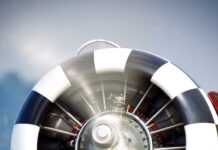In a recent discussion between air show professionals and aviation enthusiasts, the question was asked, “How do you know what to do when the maneuver goes wrong?” The pilot’s simple response was, “Because I have flown that mistake before.” While that simple statement provides some insight into what level of practice is expected of professional air show pilots, it also gives us a chance to discuss an element that is crucial to any practice flights: flying the flaw.
When practicing your air show maneuver sequence, it is important to practice the full routine uninterrupted, ad nauseam. Practicing your ideal profile builds muscle memory, and comfort with the sensory, visual and auditory feelings generated by the aircraft as you fly. This understanding of how the airplane flies and what it feels like to you when everything is OK is critical because it provides you with a clear, deep sense of what “normal” feels like, sounds like and looks like…an understanding that is particularly important for you to have when abnormalities occur.
But, as always, there is a “yin” to that “yang” and it often goes ignored. In their pursuit of flying the perfect profile, some air show pilots forget about the value of flying – and even practicing – the imperfect profile. Deliberately mis-controlling the aircraft, cutting power at every inconvenient moment in a maneuver sequence and, generally, trying to make mistakes (at a safe altitude, of course) will give you the knowledge needed to adjust your profile to make it safer. “Flying the flaw” also allows you to more quickly identify a problem should it occur unexpectedly during a performance or practice sequence so that you can spend less time on diagnosing the problem and more time on solving it.
Whether the maneuver is as docile as a photo pass or as aggressive as gyroscopics, it is critical to practice both the mistakes that you can make as well as the mistakes that the aircraft can make. “Flying the flaw” will let you know just where you need to add a buffer in your performance. For many, this type of pro-active effort to identify and mitigate likely hazards is a minimum prerequisite to be considered a truly professional air show performer.








